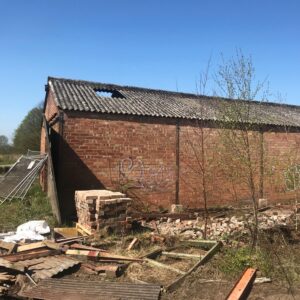A few weeks ago we heard about Crowle brickworks, a derelict brickworks outside Scunthorpe that was being demolished. The brickworks had been producing bricks since the late 19th Century although it sadly stopped production in the 1970’s.
Crowle Brickworks was established around 1880 by George Robinson (a local entrepreneur), adjacent to his brewery to the North of the railway and canal. As with any brickworks the value of the works rests in the availability of good local clay which Crowle had in abundance and it was brought to the works by a small tramway which was initially operated by horses. The works had a large brick kiln and were mechanised with power being provided by a fixed bed steam locomotive that ran a series of large pulley and web belts throughout the site.
In 1895 George Robinson was declared bankrupt, and it was not until 1906 that creditors of George Robinson sold both Tetley Hall and the Brickworks at auction and the works went on to a further chapter under new owners. At the time of the auction, the brickworks was described thus; The Crowle Brick and Tile Works, consisting of engine house, machinery shed, drying sheds, kilns and other buildings together with a boiler, 17 horse power engine, 2 newly erected brick making machines, belting, pulleys, hauling gear and other fixed plant and machinery, and also the valuable bed of clay used in connection with the works.
We were told that there was some pigeon holes on site, would we be interested? You have never seen us move so fast. Trucks packed up, boxes of all the right tools, gloves and dust masks. The yard was left untouched for over 50 years and the pigeon holes were housed in this very plain Victorian building which had sadly lost its original slate Victorian roof although it still retained the wonderful cast iron support structure. The shed was the ‘engineering shed’ primarily used to store mechanical components used to maintain the steam engine and steam tramway. The pigeon holes were stuffed full of rare steam engine parts that were scooped up by a collector. Our photos don’t do the find justice, there was over 60 metres of pure Victorian pigeon holes, untouched and in extraordinary original condition. On some planks of pine the original sawmill black dye stamps were clearly visible, the pigeon holes were made from the finest imported straight, knot free CANADIAN pine. George Robinson, a man of expensive taste.
A rare and exciting find.















